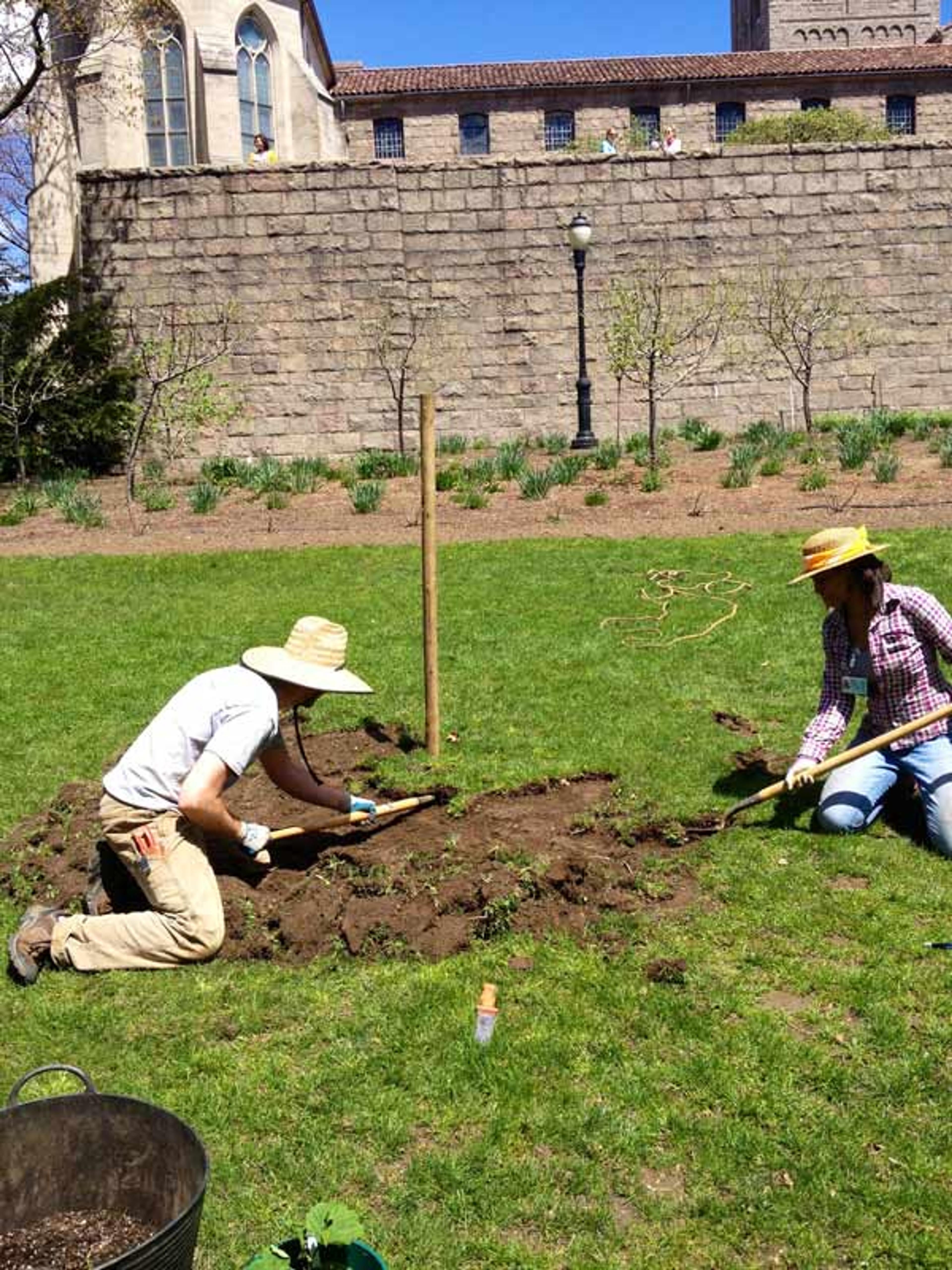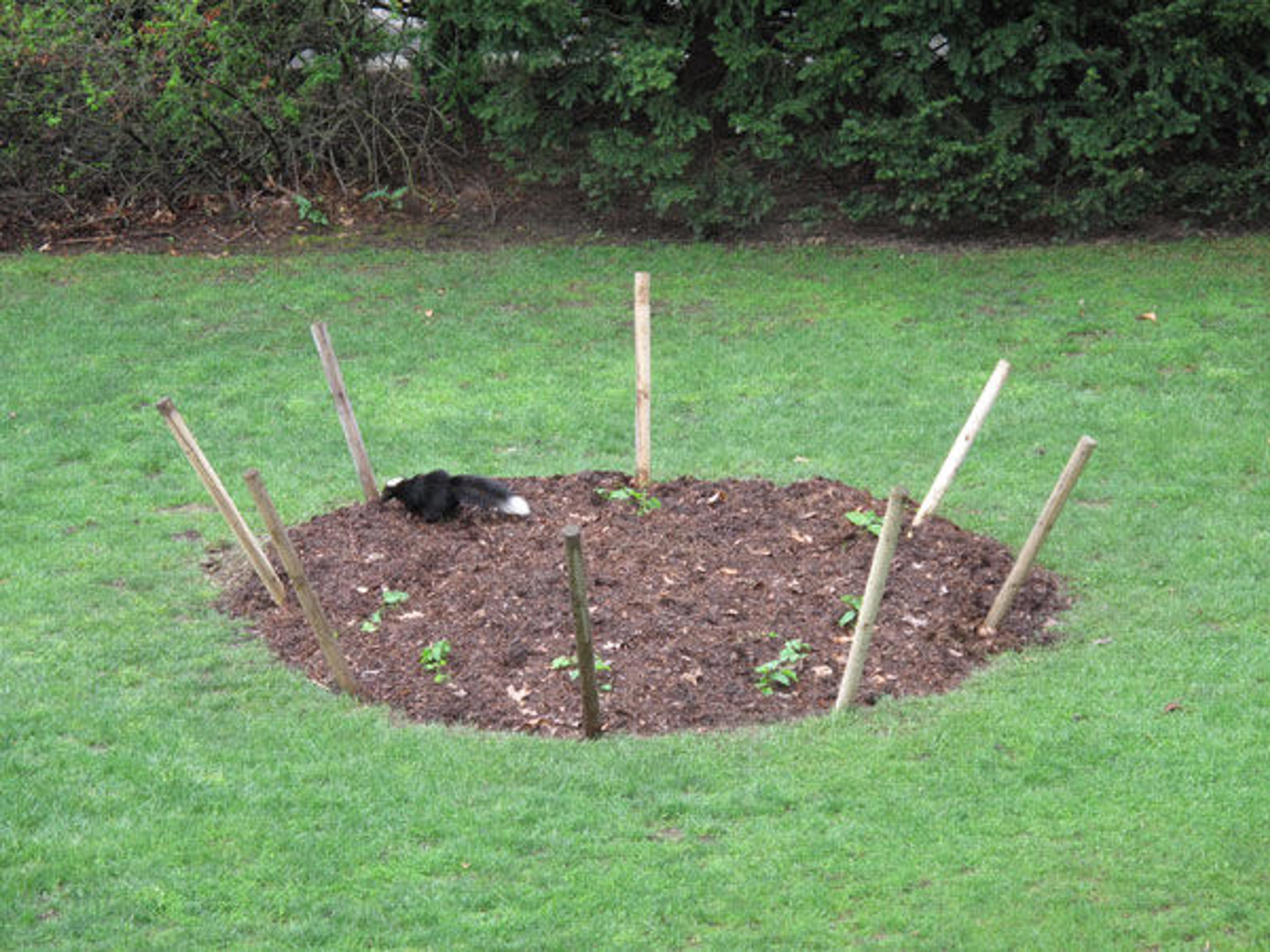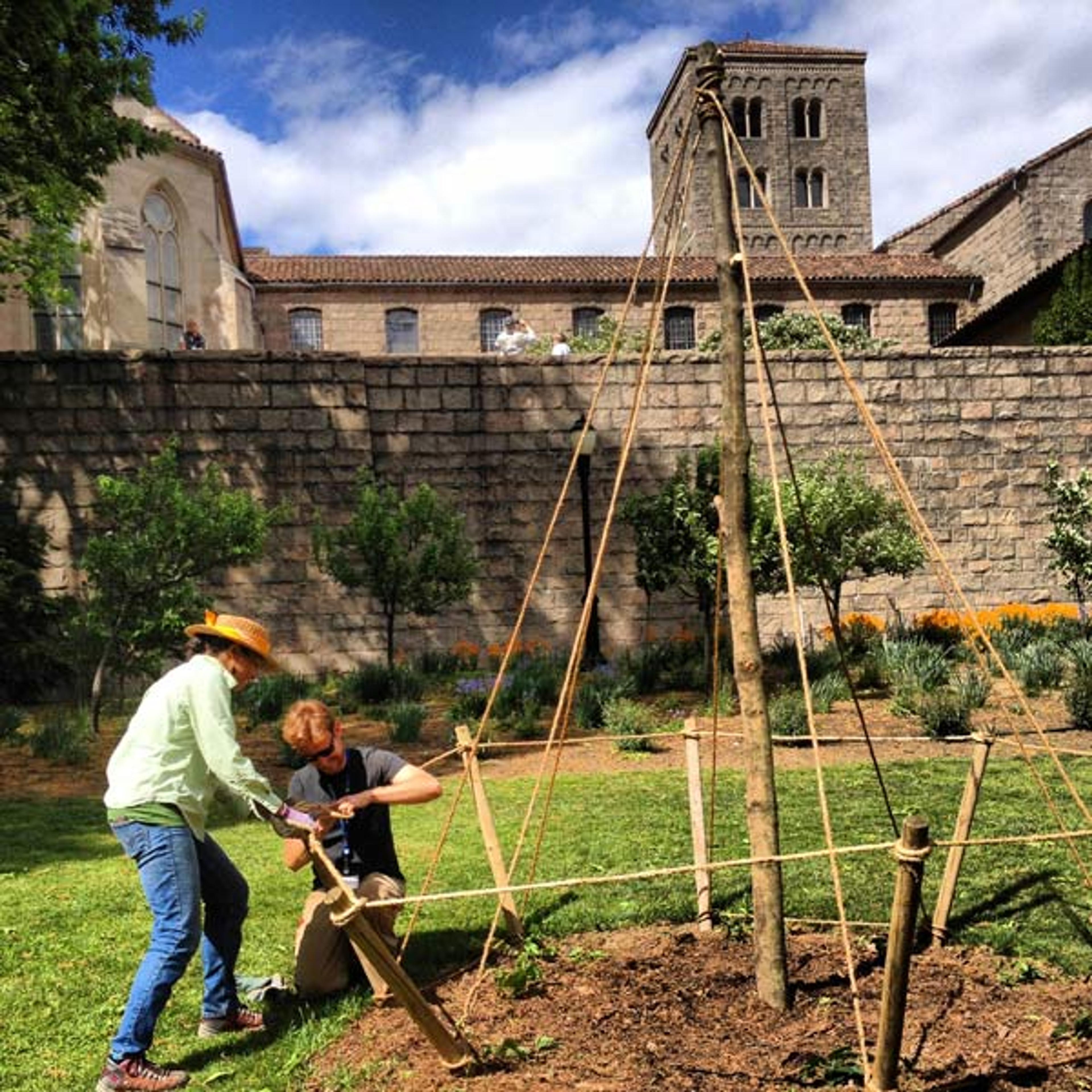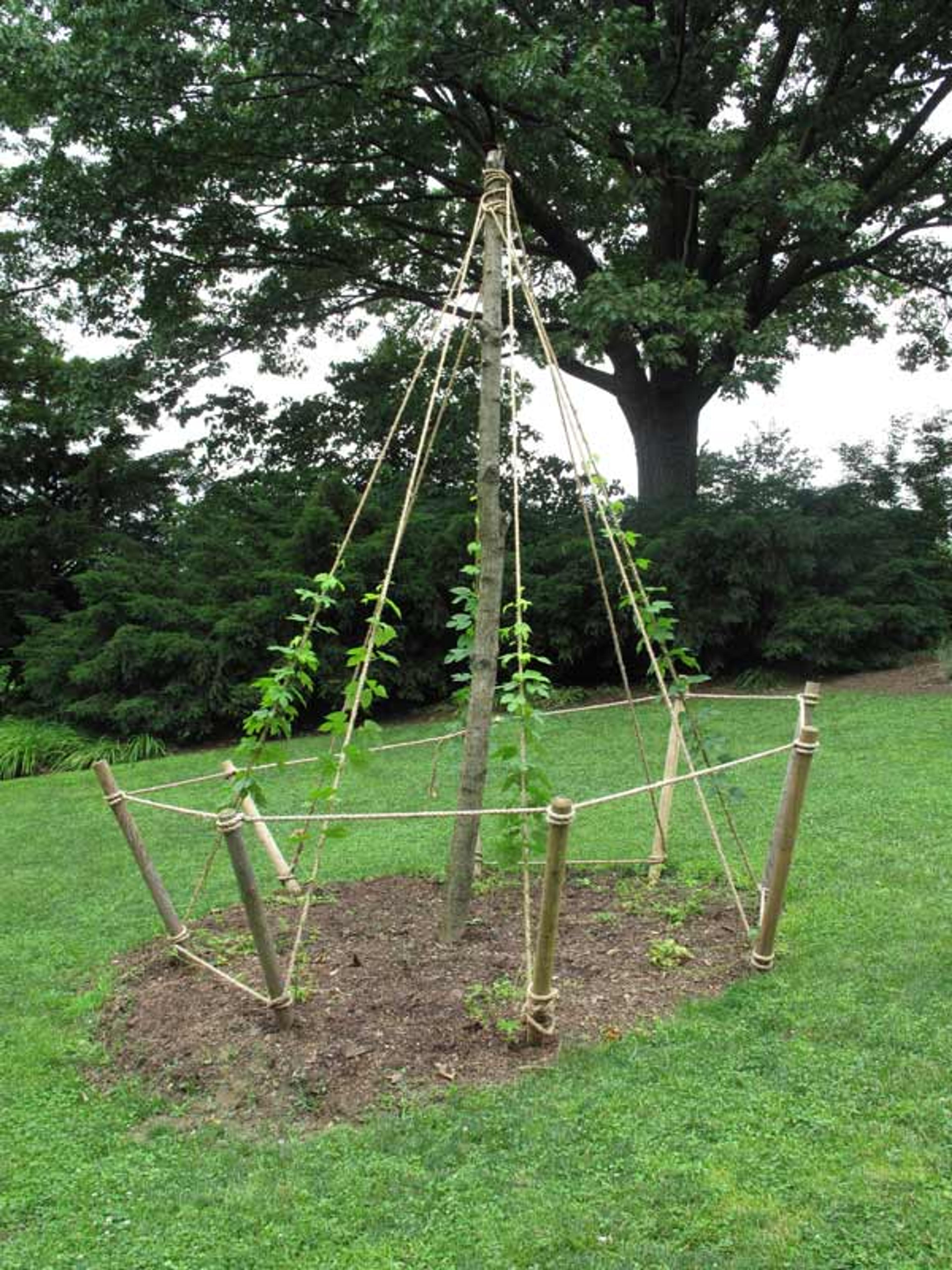
Gardeners remove sod in thin sheets to prepare a garden bed for new hops plants. Photograph by Caleb Leech
«Earlier this season, the gardens department here at the The Cloisters museum and gardens decided to freshen up and expand our cultivated hops (Humulus lupulus). In last week's post, I explained the precedent for vertical trellises in late medieval and early modern horticulture and how we used this to construct a vertical trellis for the hops in the Bonnefont Herb Garden. Today I'll outline the creation of a new bed outside the museum's walls for several young hops plants started in the greenhouse and the construction of a structure for the plants to climb.»
As I noted last week, we harvested two highly invasive trees from Fort Tryon Park with the blessing of the NYC Parks Department for use in creating new climbing structures for the hops. After hauling one pole over the wall and into the Bonnefont Herb Garden for the hops there, we set aside the other harvested pole in the orchard for use in constructing a hops trellis outside the museum's walls.
Earlier this spring, the gardens department sent away for eight new hops rhizomes from a company in the Pacific Northwest. We planted these rhizomes in pots shortly after they arrived at The Cloisters and left them in the greenhouse for a few weeks to sprout. In short order, the young plants were ready to be transplanted into the ground, but first we needed to build them a suitable garden bed for planting in the lawn beneath the orchard.

A local resident inspects the new garden bed shortly after the young hops were planted. Photograph by Bryan Stevenson
To achieve this, we drove a wooden post into the ground and used a piece of twine tied to the post to trace a circle in the lawn. The area inside the circle would be our garden bed. Using flat spades and small-blade shovels, we removed sections of sod from within the circle, exposing the bare soil underneath. We stacked the sections of sod on the lower section of the bed to level out the lawn's natural slope.
After removing the sod and exposing the soil underneath, we used a posthole digger to dig eight holes around the outside edge of the bed. We placed a wooden stake into each of these holes and then backfilled the holes to create a sturdy perimeter. This would eventually become part of the support structure, as well as protection for the plants. We planted a new hops plant at the foot of each stake on the perimeter. After planting, we covered the bare earth in the bed with leaf-mold mulch.
We gave the hops a little time to rest and get acclimated to their new garden bed, and then we started to install the trellis. With the help of the posthole digger, we dug a hole in the center of the bed to house the pole we left nearby in the orchard. Just as in the Bonnefont, the pole would act as the structural foundation for the trellis. After dropping the pole into the hole, we backfilled the hole and tamped down the soil. We then tied ropes from the top of the pole to the base of each perimeter stake to provide something for the hops to climb. Finally, we created a rope fence around the bed by roping all the perimeter stakes together.

Gardeners Yvette Weaver and Bryan Stevenson finish a rope fence around the new bed. Photograph by Caleb Leech
With a little training, the new hops plants are climbing happily up the ropes of their trellis. These hops should become more naturalized to their new home as time goes on. We hope that soon enough these hops plants will cover their new trellis with a thick cone of lush foliage and bear a rich crop of fragrant flowers.

Newly planted hops plants climb the trellis in their new garden bed below the walls of The Cloisters museum and gardens. Photograph by Bryan Stevenson